Of late, a new writing service has taken the blogosphere by a storm. This one pitches itself as “a better place to read and write”. Yes, I am talking about Medium. As a platform that lets you share your thoughts and words, Medium is rising in popularity with each passing day. In other words, it is redefining blogging!
However, all said and done, Medium just does not seem to resonate with my liking. In this article, I shall talk about my adventures with Medium, and why I just cannot get myself to fall in love with it.
Medium: Disappointment Galore
Overview
Allow me to disclaim: this is not a Medium-bashing article. In fact, there are many things about Medium that are outright awesome, and bigger names (including WordPress) can possibly learn a thing or two from them.
To begin with, the front-end editing and overall interface design is revolutionary and impressive beyond imagination. Blogger, WordPress.com and everyone else should pay heed to Medium — everything from the typography, the minimal editor and the look and feel encourages you to write!
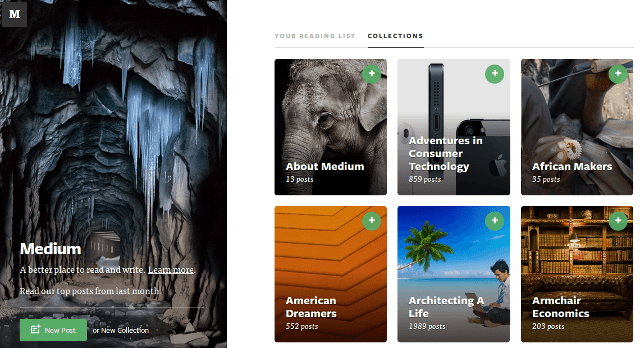
Next, the analytics are pretty good too. While I would personally prefer something that has more depth, such as country views, referring keywords and incoming links etc., the stats at Medium in their present shape are good enough. In fact, the concept of Views vs Reads is amazing in its own right: how many times have you bothered to distinguish your blog’s traffic between random visitors and actual readers? Medium does that for you because obviously, not everyone who opens the page actually cares to read the content. There is surely room for improvement in Medium Analytics, but currently it is not a totally dismal picture either.
So if Medium is so good at what it does, why am I not entirely happy? Because what Medium does is not the same as what it is supposed to do.
The Bigger Picture
Note: This section will have a couple of links to my own Medium profile in order to get new readers explain my point properly.
So, since everyone all over the internet is talking about how Medium is redefining blogging, I decided to give it a spin and see if it can be used for my blogging needs.
And so I started writing, and yes, I loved the editor. Minimal, clean, non-infringing, nimble and impressive — if it were for me, I would’ve probably urged every publishing software around the world to employ this very editor.
Writing, editing, adding images, and publishing — the entire process is a breeze. And once published, the article looks pretty good too in terms of typography and appearance.
Beyond that, Medium also gave me all that I sought and expected. For instance, a comment system that ensures there shall be no spam (for people comment via their Twitter profiles):
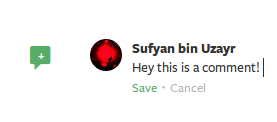
And tools that encourage readers to share and recommend articles:
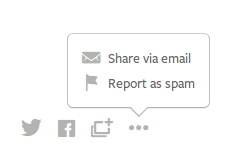
All of this, coupled with a no-nonsense interface and reader-friendly layout. For a moment, I felt that I had found the ideal platform to write on.
I said, for a moment!
Even though Medium offers tools that help readers share articles that they like, and also boosts reading and writing experience by grouping content under categories and collections, the way it implements these collections just threatens to send my readers to others’ content. Call me pompous or selfish, but when it comes to visitors and readers, my logic is simple: if someone has taken time to search for a particular topic and decided to read my writings on that given topic, I would prefer them to read my content and stay for as long as possible — not wander off to someone else’s write-up about self-medication tips. This is how even the biggest magazines and websites operate, don’t they? You don’t win readers and convert visitors into subscribers by referring them to other’s pages as soon as they come to yours!
Just to put things into perspective, on the same page, this is my article:
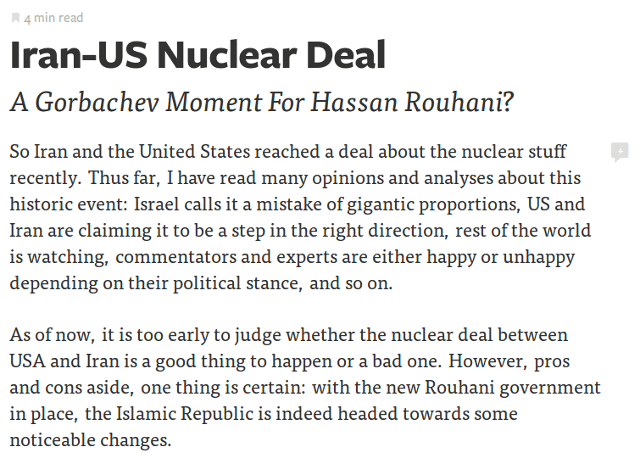
But wait, right at the end of the article, this is not me:
Similarly, if I include my article(s) in any of the collections, those collections show up on my profile page.
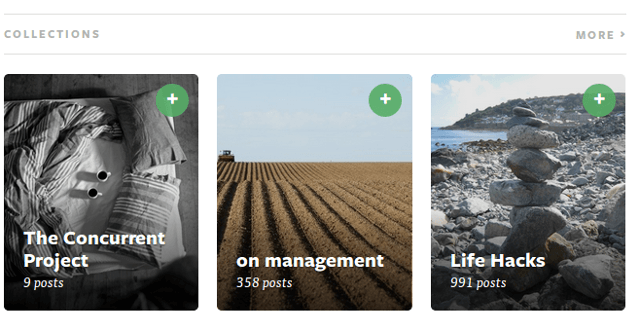
However, quite obviously, those collections are not exclusively mine (I can indeed create a new collection, and I believe that is the right thing to do, but why should I create a “Life Hacks” collection if one already exists?). Put it this way: in the above screenshot, I placed just one article in Life Hacks, and it appeared on my profile page. But when my readers click on this collection, hoping to find my writings in there, they won’t find my solitary article — the newest articles appear on top, and my single piece is nowhere to be seen after a few days. I felt that the best bet was to decide against using collections.
But wait, if I can send readers to others’ content, won’t others send visitors to mine? Probably, but I doubt if it is worth it. More often than not, anything that gets popular on Medium is picked by the editorial staff, and unless my articles make it to the Editor’s Picks section, I will just be giving away readers, and not receiving any.
Unless Medium cures this hole in the bucket, I doubt if I can use it for serious blogging. I would be happy if Medium allowed me to choose which collections appear on my profile, or just showed the articles that I have contributed to a given collection. Plus, and more importantly, when a reader is done reading my article, show them another of my own articles. Or even if you are really keen on showing somebody else’s content, please at least ensure that the particular article shares something in common with mine? What would someone, who has just finished reading my commentary about Middle East and nuclear weapons, do with an article about the need to write down your grocery list?
Conclusion
Make no mistake about it: Medium is indeed good. It has shown us the benefits of simplified writing and reading, and I strongly feel it deserves a lot of praise for that. However, IMHO, Medium is meant for collaborative writing, and not blogging.
We blog because we have something worth saying. Most bloggers seek subscribers, readers and attention. If Medium’s community-centric writing model continues to be mistaken for blogging, Medium might as well unknowingly kill the very reason why folks bother to write a blog. This model can offer exposure, but the attention shifts from the individual blogger to the platform itself.
Lastly, this is where tools such as Roon or Svbtle, though less popular than Medium, stand apart. Not only do they offer a minimal and no-frills writing and reading experience, they also adhere to the true definition of blogging — my readers at Svbtle (last attempt at self-promotion, I promise) can at least stick around and read my work sans repeated “Check this one out as well!” links.
What do you think of Medium? Is it actually blurring the line between collaborative writing and blogging? Share your thoughts in the comments below!
Related Topics
Top